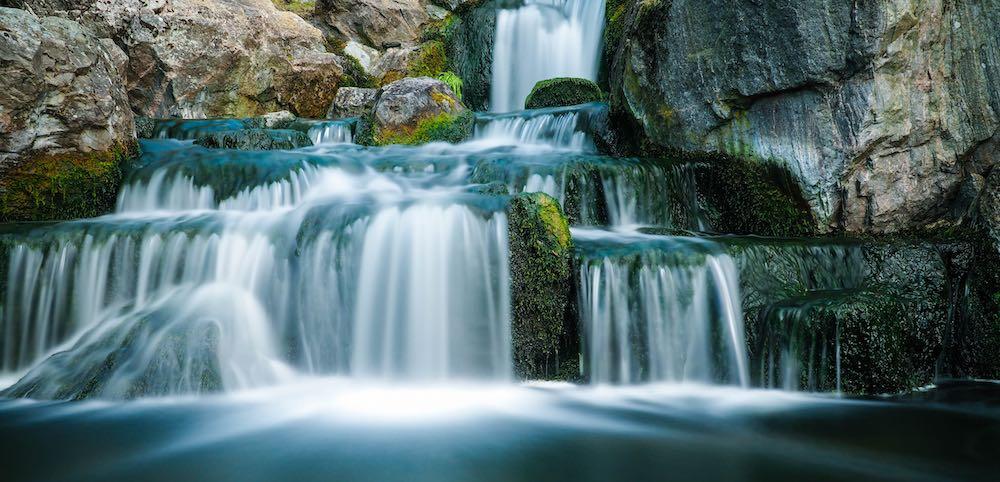Archbishop Desmond Tutu chooses Aquamation
When the death of Nobel Peace Prize Winner Archbishop Desmond Tutu was announced, a state funeral was arranged in Cape Town, South Africa. A statement was released that he had requested an aquamation, rather than a tradition fire cremation.
Aquamation was the environmentally friendly, and flameless method chosen by the archbishop. He was eternally passionate about protecting the environment and this method produces less carbon emissions and uses less energy to that of a fire cremation.
What is aquamation?
Across the world aquamation is known by many names, including:
water cremation
biocremation
resomation
flameless cremation
Aquamation is a type of cremation that uses water instead of fire to gently break down organic material. It works in the same way that an animal or human body naturally breaks down over time in soil or water.
The body is placed carefully into a stainless-steel vessel where flowing water, heat and alkalinity break down the material between 8 to 20 hours.
The remaining bones are dried, powdered, placed in an urn and then returned to the family. The remaining water can then be used in the garden or poured down the drain.
History and rising trend of aquamation
In the 1800s, aquamation was developed to process animal carcasses into plant food. By the 1990s, researchers were using it to dispose of animals during experiments.
In the 2000s, American medical schools used aquamation to respectfully dispose of human bodies donated for science.
In 2005, US company Bio-Response Solutions designed the first system for humans, which the Mayo Clinic has since used for decades.
Today, aquamation for our beloved pets is approved everywhere in the United States and Canada. However human aquamation is approved in only half the states.

Benefits of aquamation Vs cremation
Despite the long history of aquamation, this method is only starting to gain attention now due to the benefits over cremation and burial.
The greatest benefit of aquamation is that it’s much less harmful to the environment than cremation.
Fire cremation releases carbon monoxide, soot, sulphur dioxide, heavy metals and mercury, which can cause health issues for people who live around crematoriums. It also uses about 36 kilograms of gas at around 1000 degrees Celsius.
Unlike cremation, aquamation doesn’t emit greenhouse gases, mercury, or fossil fuels.
On average, humans each have 2–4 grams of mercury in our bodies which is released during fire cremation. In contrast, mercury and other metal objects like pacemakers and knee replacements remain solid during aquamation— they can also be recovered.
Another benefit of aquamation is that it leaves more ashes behind for the family. The powder is white rather than the grey ash recovered after a fire cremation.
The whole water cremation process does take a little longer than fire cremation but the benefits of this gentle and environmentally-conscious water method will probably outweigh the time factor.
Burial Vs aquamation
Burial is a time-honored way to lay our loved ones to rest. However, problems like land shortage and non-biodegradable material are starting to make cremation, particularly water cremation, more appealing in this environmentally conscious era.
Traditional cemeteries require a lot of land —this problem will only increase as the world’s population increases. These cemeteries also need ongoing maintenance, roads, buildings and gardens.
The materials used for wooden and metal caskets, often with plastic lining, are also causing an environmental problem. These caskets aren’t particularly biodegradable and will take a long time to break down.
Embalming is still common in the United States and is also an issue as embalming fluid can leak into the soil and poison the land.
Many people who have strived to be environmentally conscious throughout their life aren’t comfortable causing this type of damage after they pass away. This makes aquamation the ideal alternative to both burial and fire cremation.
Cost of aquamation
Aquamation costs less than a traditional burial, so it puts less financial pressure on families who have had a loved one pass away unexpectedly or don’t have the financial means for a burial.
However, it is a little more expensive than a traditional cremation due to the cost of the equipment being used. This cost may decrease in coming years as it becomes more popular.
In the United States aquamation can cost around $2000 - $3000. This usually includes the fee for water cremation, medical certificates, death certificate and other requirements.
Funeral costs will usually cost extra, though some funeral homes may offer packages to reduce the overall cost.

Online memorials
If you’re considering cremation, particularly the environmentally protective method of aquamation, you might also like to consider an online memorial.
Memories is a digital legacy platform that allows you to save your family history permanently in a secure environment.
Keeping a memorial online has several benefits over a physical memorial as your memories remain with you permanently and are accessible online from your mobile device or laptop at anytime. Key benefits includes:
it is a central place to store and save photos, videos and memories of a loved one
can be converted into a slideshow for presentation at the memorial service
can be shared with family and friends, enabling them to contribute to the online memorial
can be added to in the future
can be passed onto future generations to come.
To start an online memorial, you can register an account with Memories and follow the steps to create a trial account.
